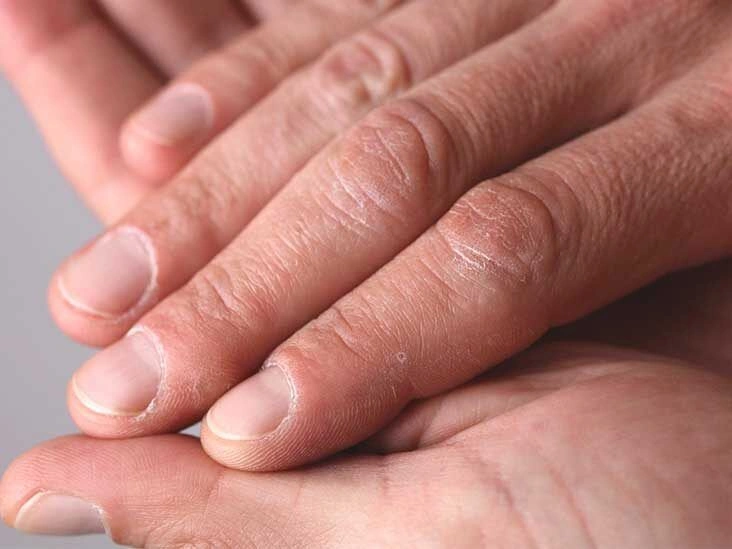Your fingernails can disclose much about your overall health. A frequent alteration is the emergence of vertical or horizontal ridges.
Below is an explanation of why fingernail ridges form and what they might indicate.

Pictures of ridges in fingernails
Vertical ridges in nails
Vertical ridges are grooves that extend from the free edge of the nail toward the cuticle. They’re also referred to as longitudinal striations or bands.
According to , faint vertical ridges on fingernails commonly appear in older adults, possibly due to a reduction in cell turnover. Cell turnover is the process where new skin cells generated beneath the skin surface move upward to replace dead cells being shed from the surface.
If you notice additional symptoms like altered nail texture, an underlying medical issue may be responsible. In trachyonychia (twenty-nail dystrophy), the ridges can make nails appear dull or brittle.
Iron deficiency anemia can also produce vertical ridges and changes that make nails become concave or spoon-shaped.
Horizontal ridges in nails
Pronounced horizontal ridges, known as Beau’s lines, frequently indicate more serious conditions. They can actually halt nail growth until the triggering problem is resolved.
The presence of Beau’s lines may coincide with acute kidney disease.
According to a , medications — especially chemotherapy agents — were the most frequent cause of Beau’s lines. Other contributing factors included:
- non-autoimmune systemic illnesses, such as:
- mumps
- parathyroid disorders
- poorly controlled diabetes
- syphilis
- respiratory illnesses
- conditions that cause prolonged high fevers
- zinc deficiency
- trauma
- infection
Injuries to your nails can lead to red or brown discoloration forming beneath them.
If you detect dark brown, black, or red color changes under your nails and haven’t had nail trauma, it could signal a more serious condition, such as endocarditis or melanoma.
Diagnosing the cause of fingernail ridges
A physician should assess any nail changes. If the nail was injured, you might observe healing for a few weeks to decide whether medical attention is necessary.
However, seek medical care promptly if the injury causes:
- a clean or jagged cut through the nail
- a crushed nail
- a nail that’s been torn off
- bleeding beneath the nail
If nail changes occur without trauma, you should still be evaluated. During the visit, your doctor will inspect your nails and ask about other symptoms you may have.
Your doctor might request urine and blood tests if kidney disease, diabetes, or nutritional deficiencies are suspected.
If a skin disorder seems likely, a dermatologist can initiate an appropriate treatment plan.
If the reason for your fingernail ridges is uncertain, a dermatologist may collect nail clippings to analyze in a laboratory for signs of infection.
How do I get rid of fingernail ridges?
Because nail ridges often reflect underlying health issues, treatment targets the root cause of the nail changes. For instance, if Beau’s lines arise from diabetes, better blood sugar control may lessen these horizontal ridges.
Treatment for dermatologic conditions like eczema might include hand moisturizers or topical medications to ease symptoms.
If low mineral or vitamin levels are responsible, dietary changes or supplements may be recommended to raise your levels.
Consult a dermatologist for guidance on treating your nails. Take care not to inadvertently cause more damage.
You can connect with a dermatologist in your area using the Healthline FindCare tool.
Frequently asked questions about ridges in your nails
What do ridges in your nails mean?
Nail ridges are usually harmless but can indicate different things. Vertical ridges commonly reflect aging, whereas horizontal ridges can suggest issues like malnutrition, significant nail trauma, or Beau’s lines.
What causes ridges in nails?
According to 2022 research, ridges are most often related to aging. They can also stem from poor nail care, injury to the nail, vitamin shortages, or potentially more serious medical conditions.
Can nutritional deficiencies cause ridges in nails?
Certain nutrient shortages can affect nail health. For example, iron deficiency may cause vertical ridges. Other nutrients that influence nail condition include zinc and vitamins A, C, and D.
According to 2018 research, biotin is commonly recommended to support nail health, though more study is needed to fully understand its benefits.
Can you buff out ridges in nails?
Some dermatologists say you can lightly buff nails to smooth ridges. Still, it’s generally advisable to prioritize moisturizing, keeping nails trimmed, and consulting a dermatologist for further recommendations.
What’s the outlook for people with ridges in their nails?
In most cases, fingernail ridges are a normal sign of aging. Nevertheless, it’s important to monitor nail ridges and other changes, as they can sometimes be the earliest indicators of a serious medical issue.
The takeaway
Ridges on fingernails are most often associated with aging. Mild vertical ridges frequently develop in older adults.
Occasionally, ridges may point to health concerns such as vitamin deficiencies or diabetes. Marked horizontal ridges, called Beau’s lines, can indicate a more serious condition.


















Leave a Reply
You must be logged in to post a comment.